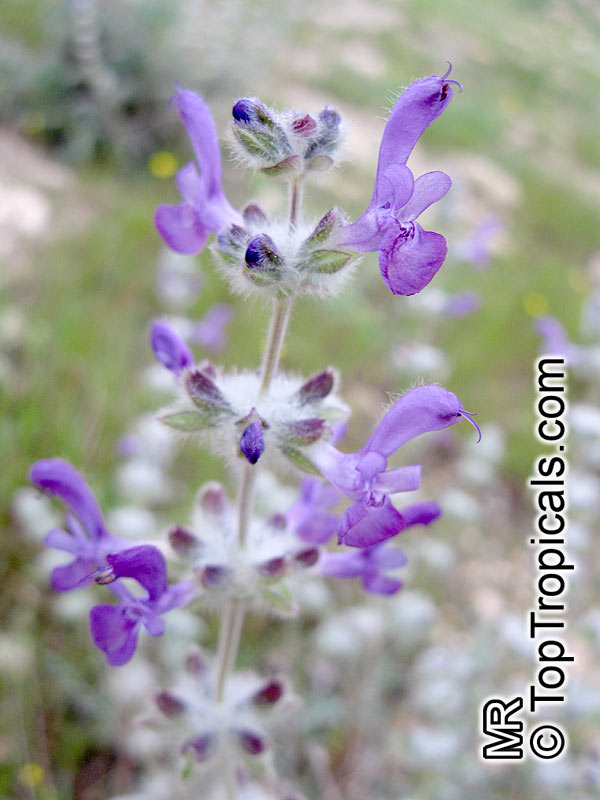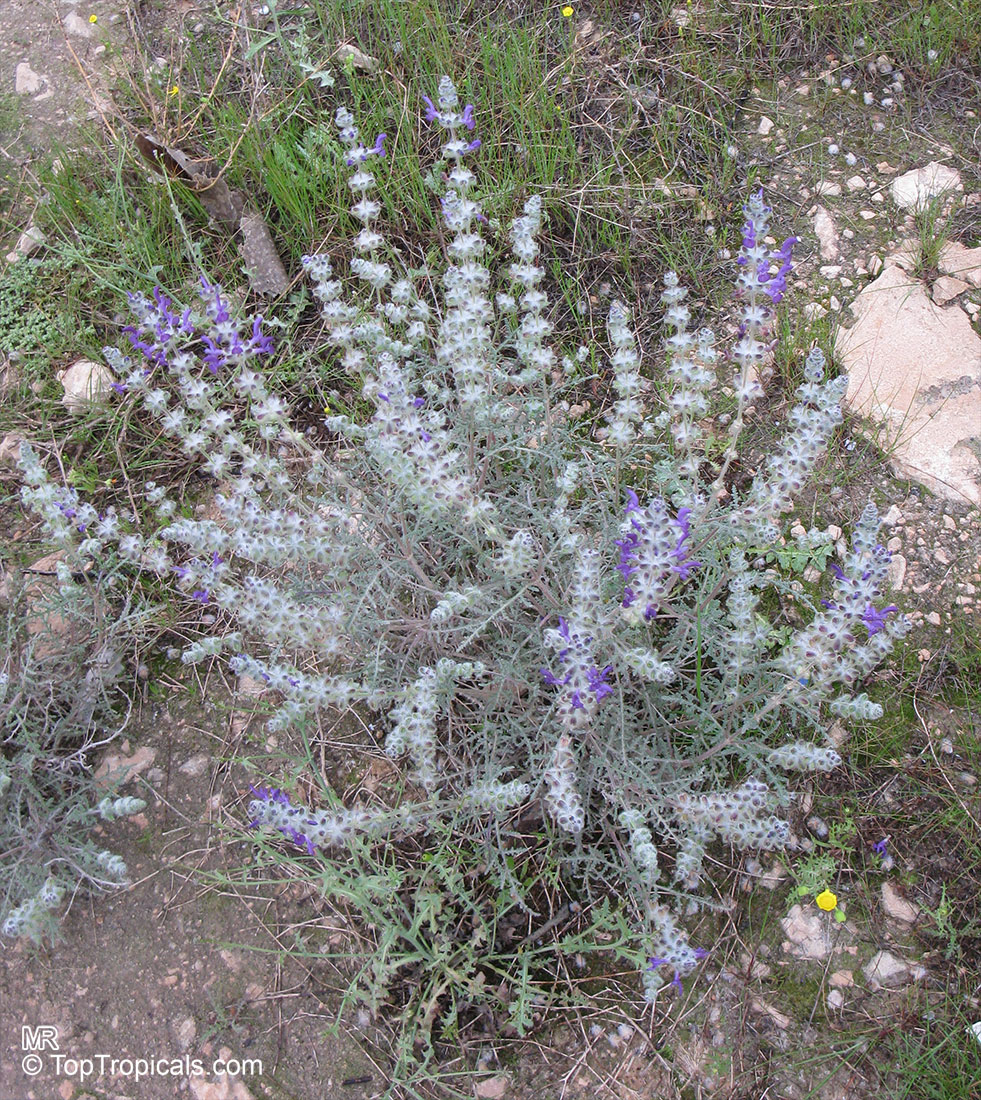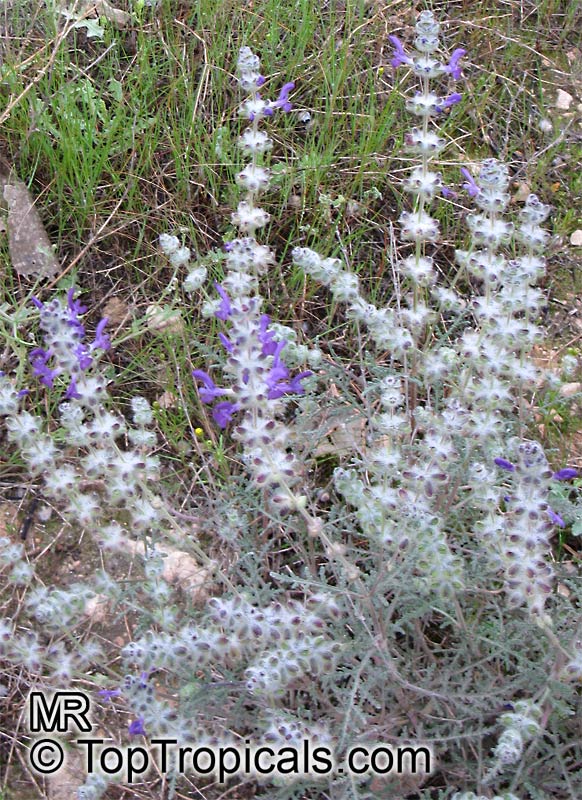Salvia lanigera (Wooly Sage)
Top Tropicals Plant Encyclopedia
Botanical name: Salvia lanigera
Common name: Wooly Sage
Family: Lamiaceae
Origin: Northern Egypt and Arabia





Salvia lanigera, commonly known as Wooly Sage, is a small shrub native to Northern Egypt and Arabia. It has single-stemmed, erect, hairy branches and is often 2-5 ft tall. The leaves of the plant are soft pale gray-green and emit a pungent aroma when touched. It produces a profusion of sky-blue, lavender or purple flowers with a protruding upper lip.
To keep the plant healthy and blooming, it should be planted in full sun and watered moderately. When drought occurs, the plant can survive in dry conditions. It prefers a nutrient-rich soil and needs occasional feeding with a balanced fertilizer to promote new growth and abundant blooms. Wooly Sage is best suited in warm temperature climates and is winter hardy in USDA Zone 9-11.
In colder regions, it can be grown in containers and stored indoors during winter months to protect it from extreme cold. For indoor planting, use a well-drained potting mix and keep the soil lightly moist but not soaked. Place the pot in a location with indirect light and water when the surface of the potting mix starts to dry out. It is also important to provide adequate humidity for this plant to flourish indoors. A pebble tray filled with water or humidifiers can help to keep the air moist. Proper ventilation is equally important to prevent the buildup of molds and mildews.
Ultimately, Salvia lanigera is an excellent choice for a low-maintenance garden and can make a beautiful addition to a sunny, warm garden setting. With its cheerful blue, lavender and purple blooms, the Wooly Sage will reward you with its beauty and aroma for many months of the year.
Similar plants: Salvia lanigera (Wooly Sage)
- Salvia argentea (Silver Sage)
- Salvia aurea (Brown Salvia)
- Salvia coccinea (Red Salvia)
- Salvia discolor (Andean Sage)
- Salvia dolomitica (South African Sage)
- Salvia elegans (Pineapple Sage)
- Salvia farinacea (Mealy Sage)
- Salvia guaranitica (Anise-scented Sage)
- Salvia hispanica (Chia)
- Salvia lanceolata (Rusty Sage)


